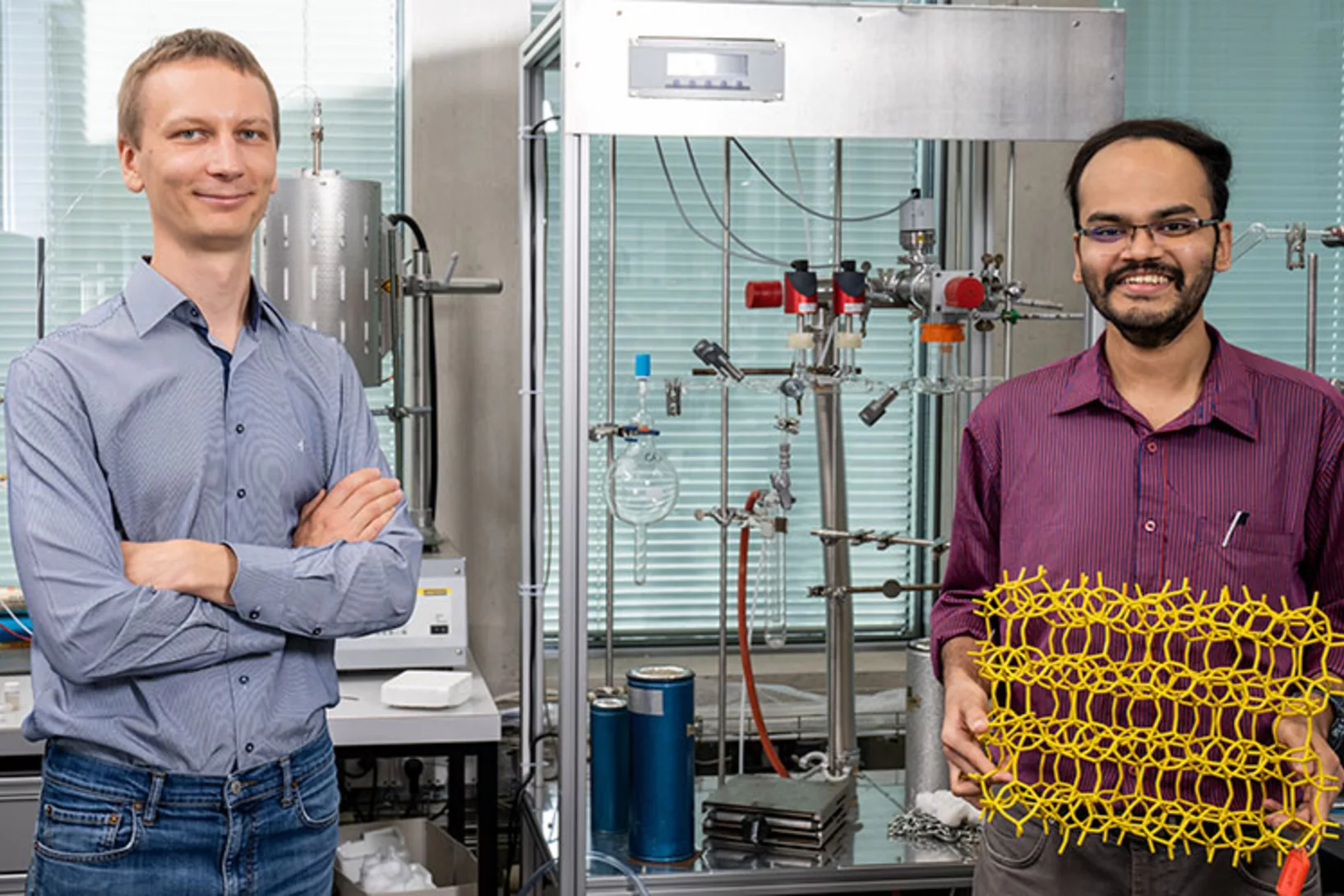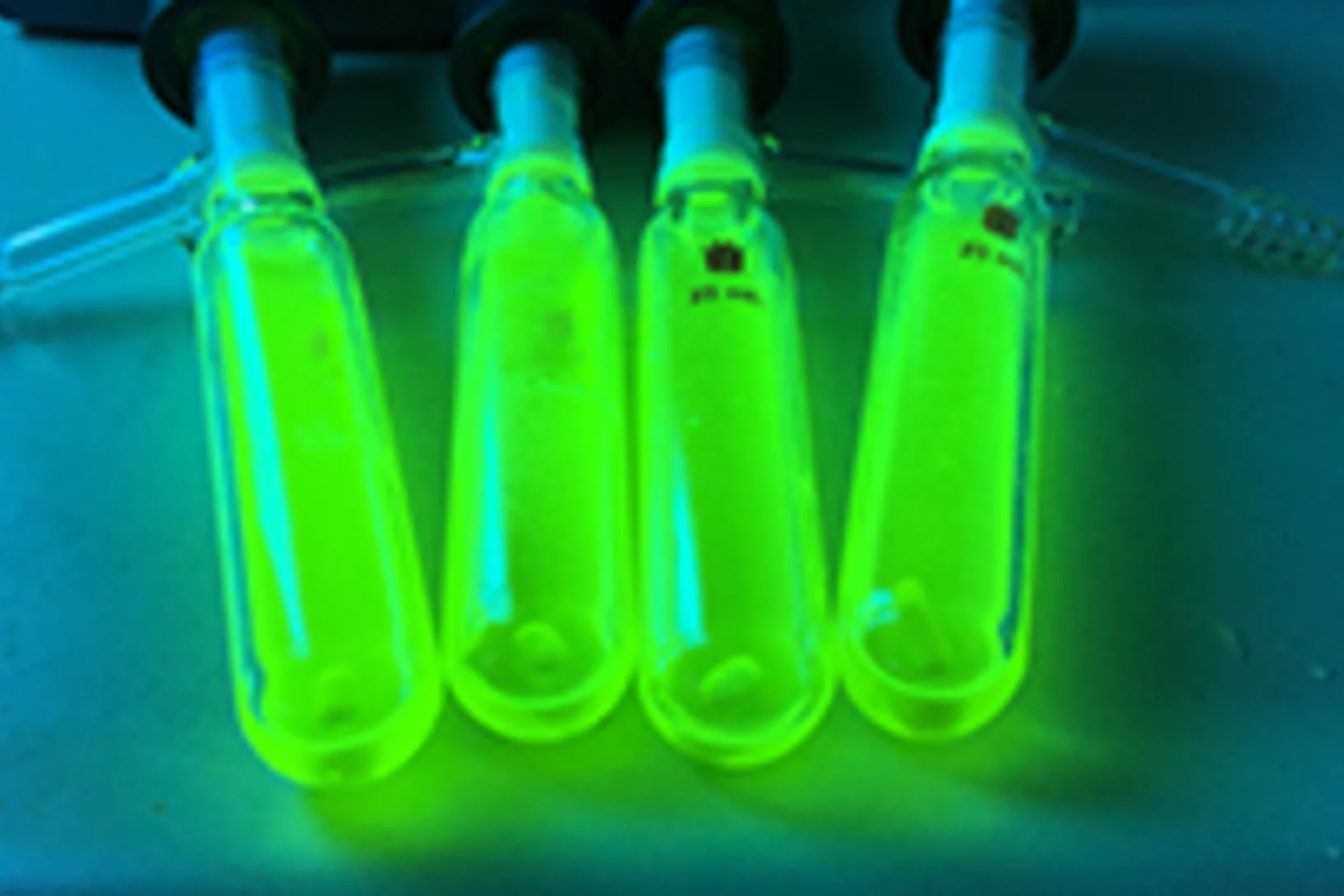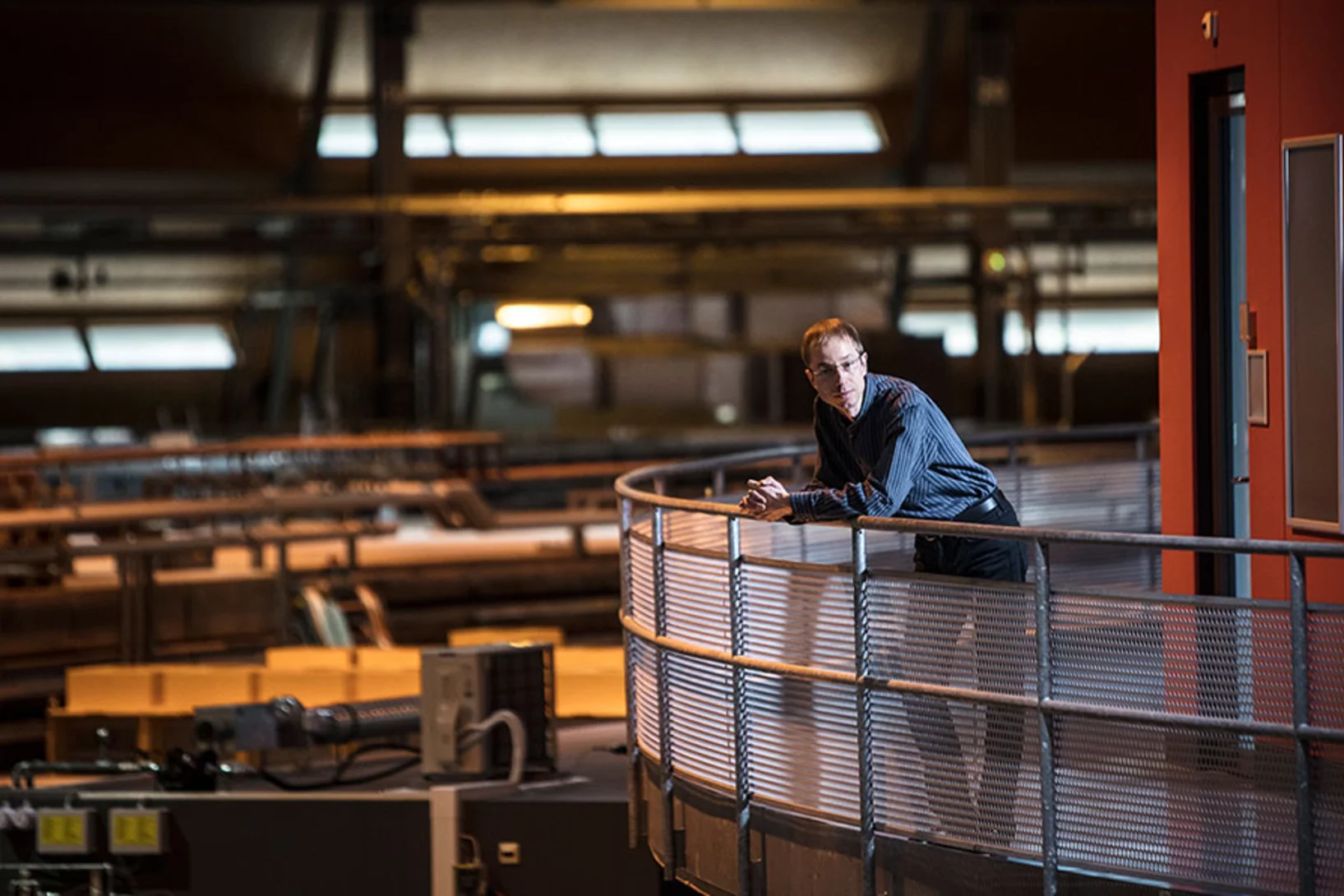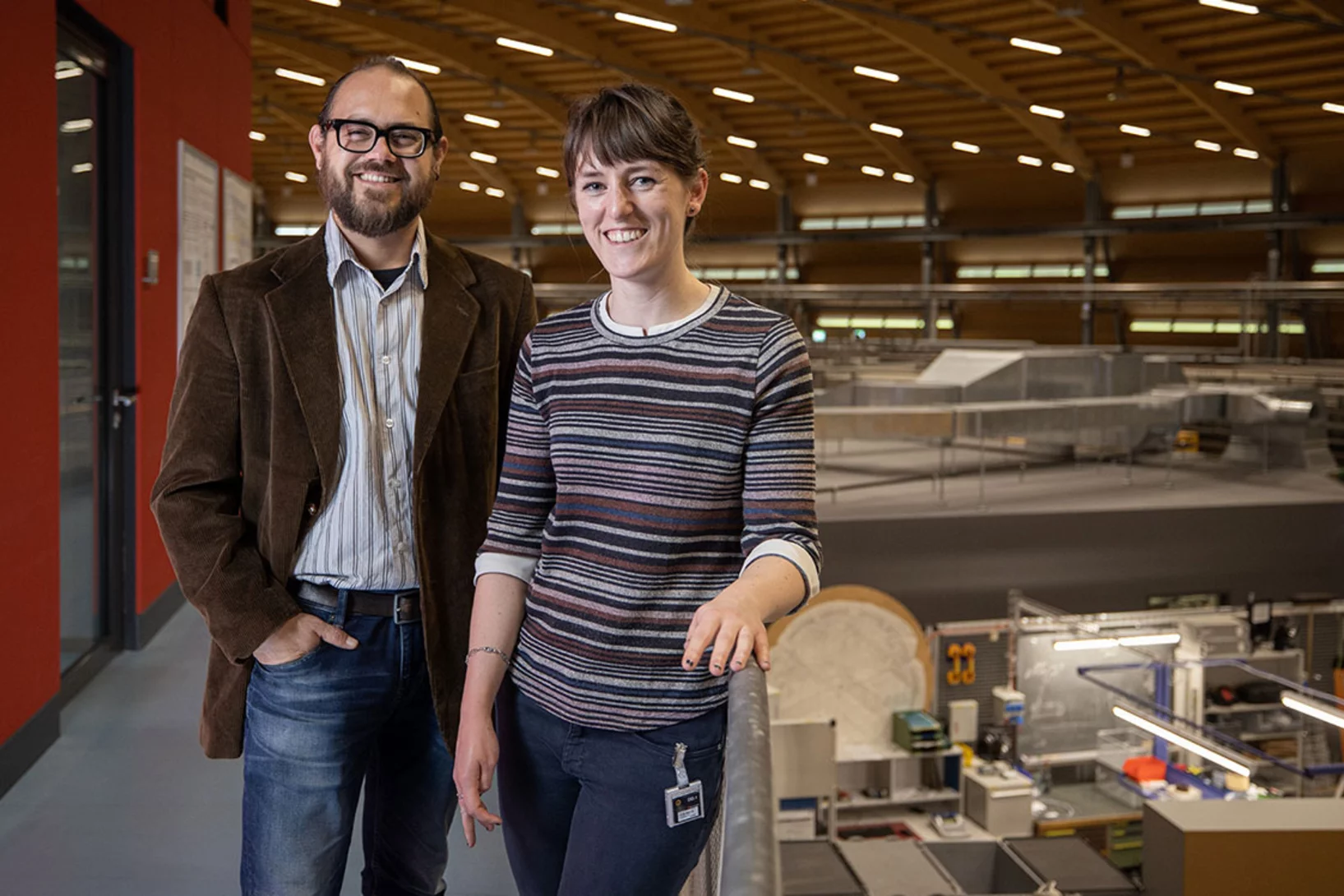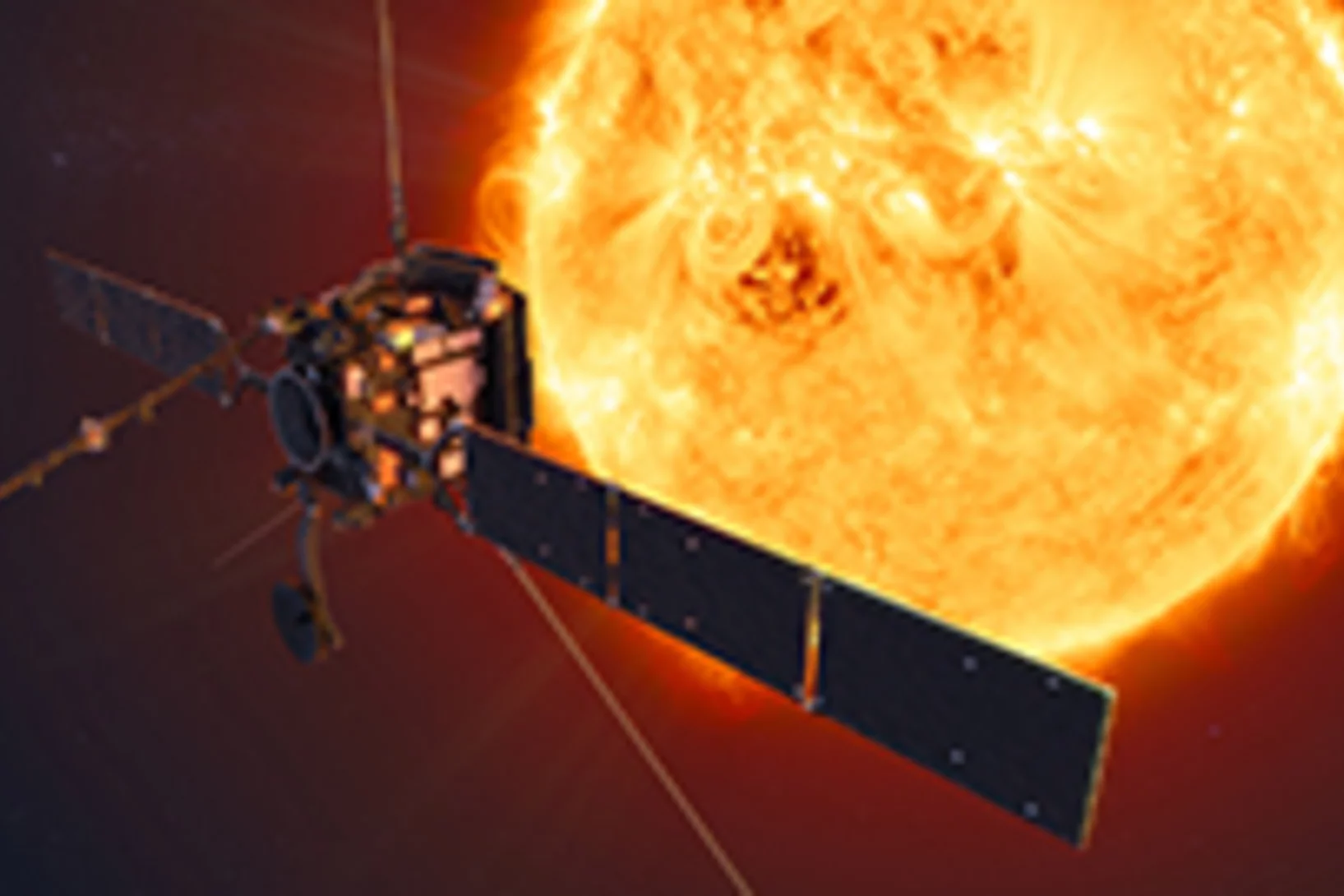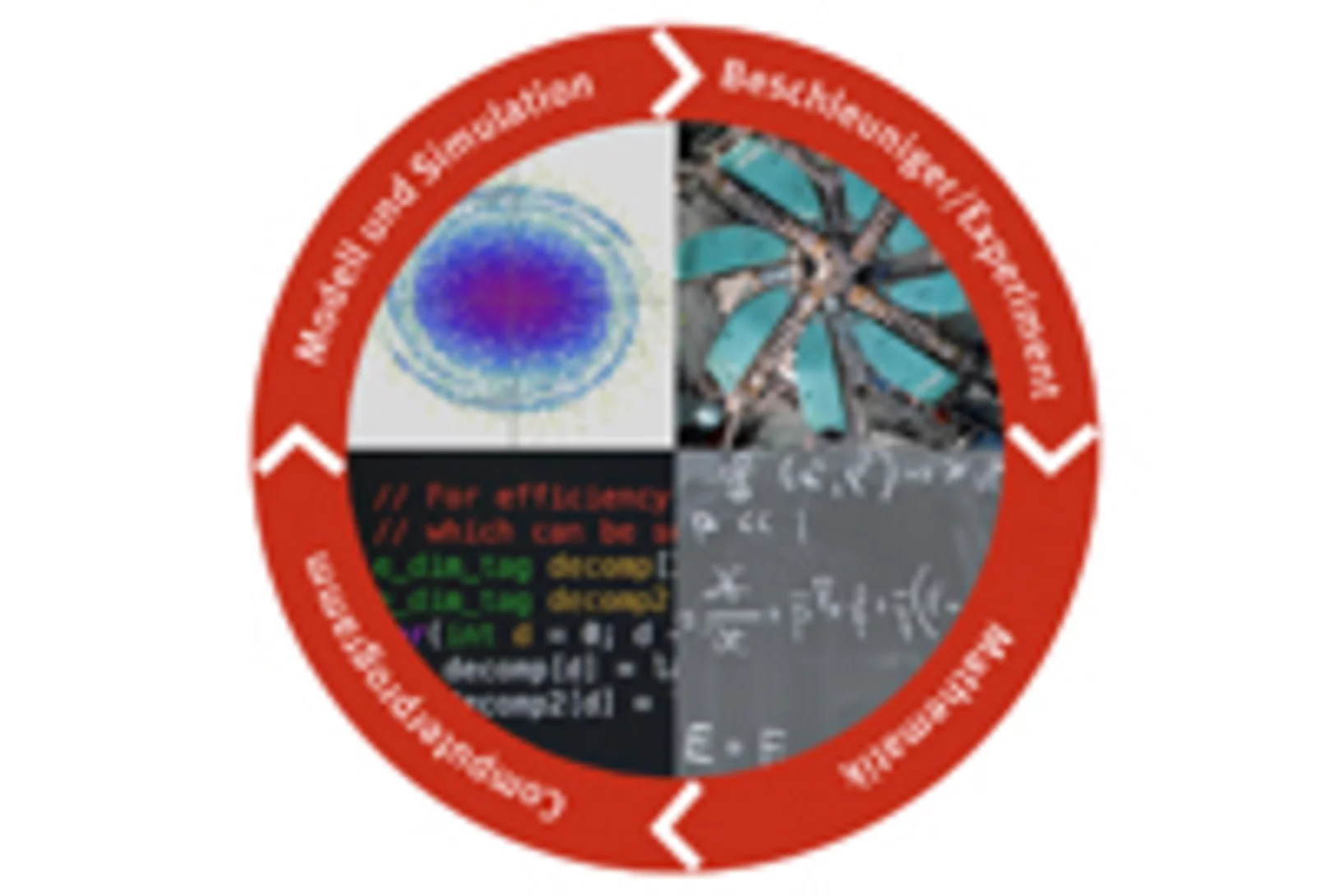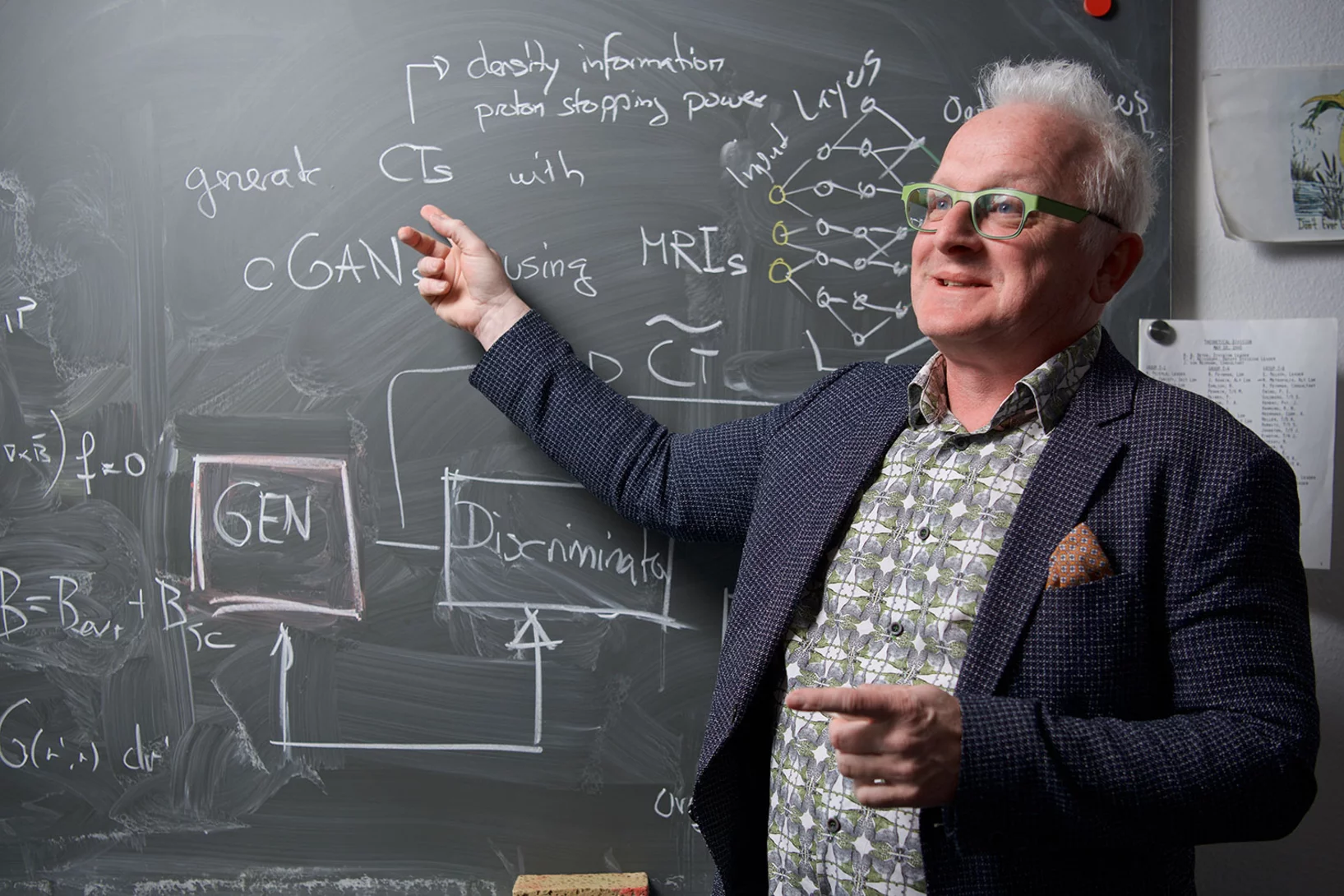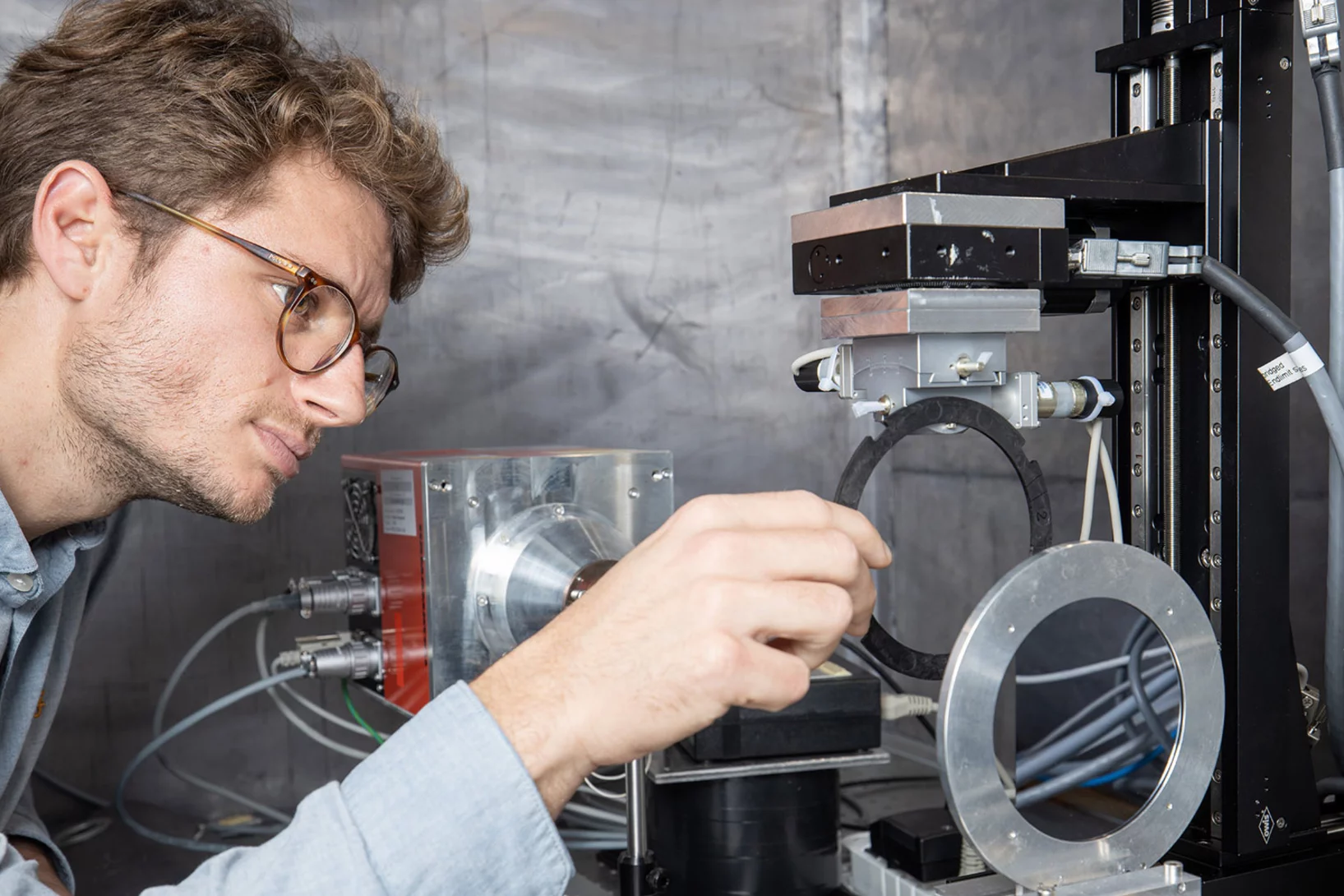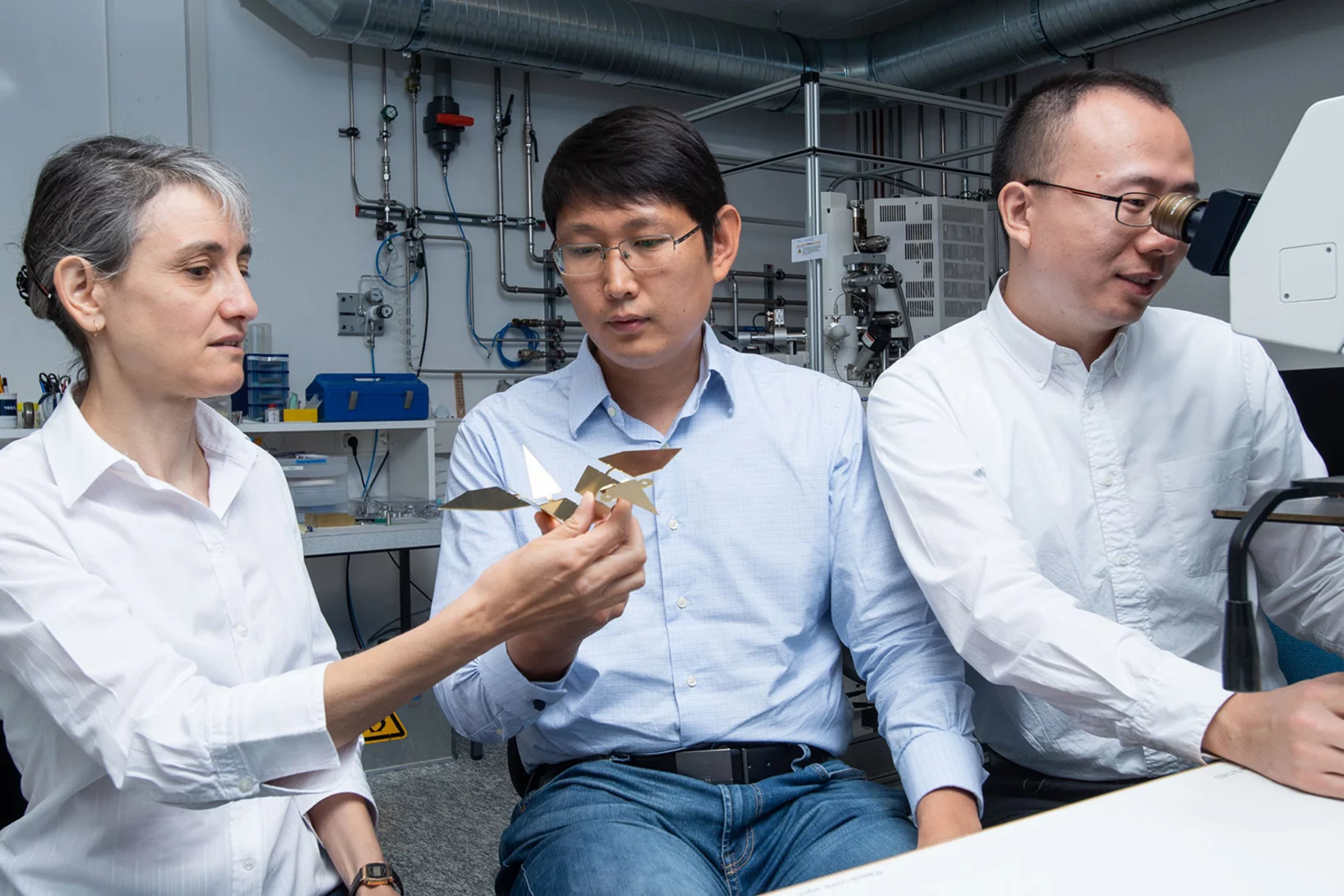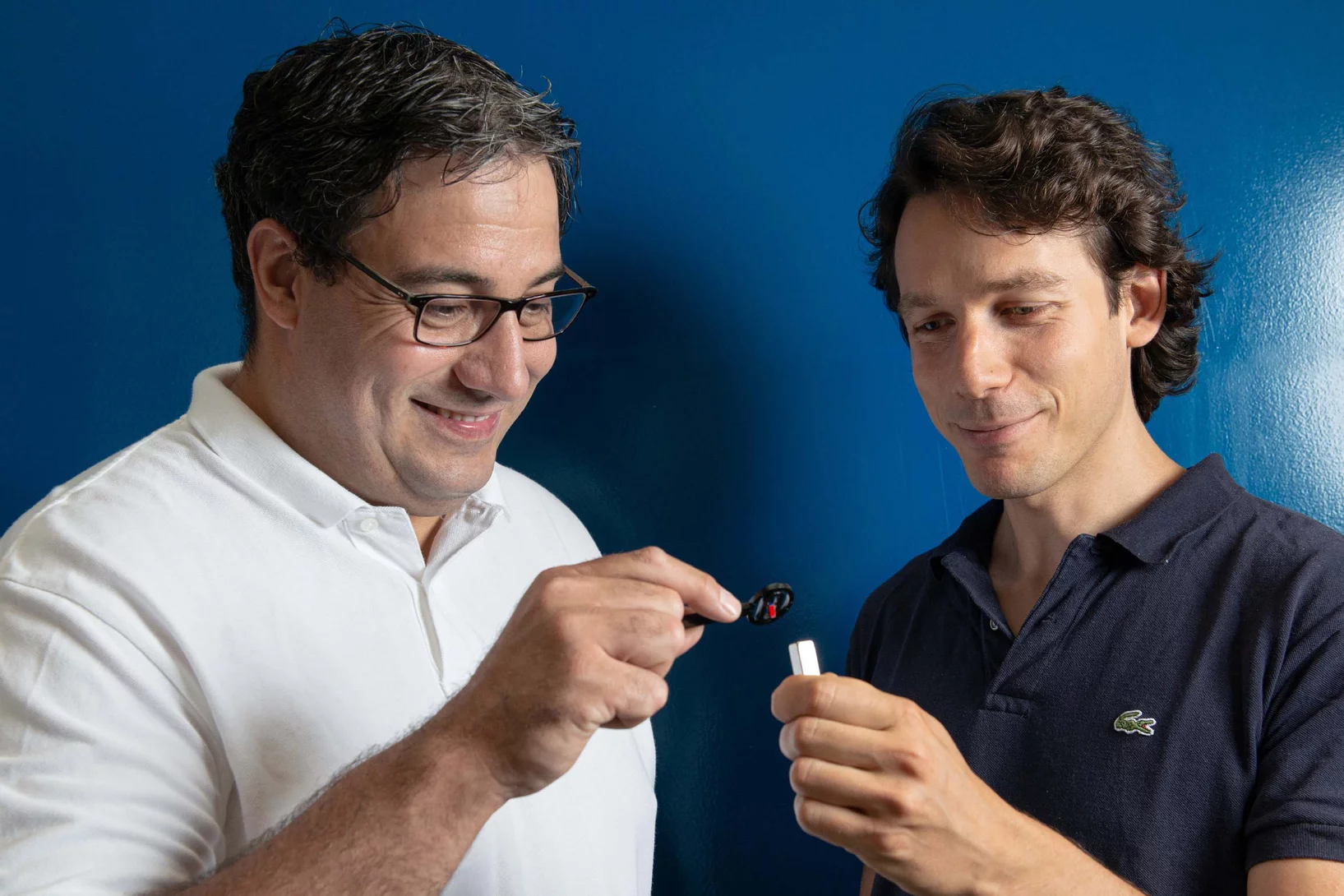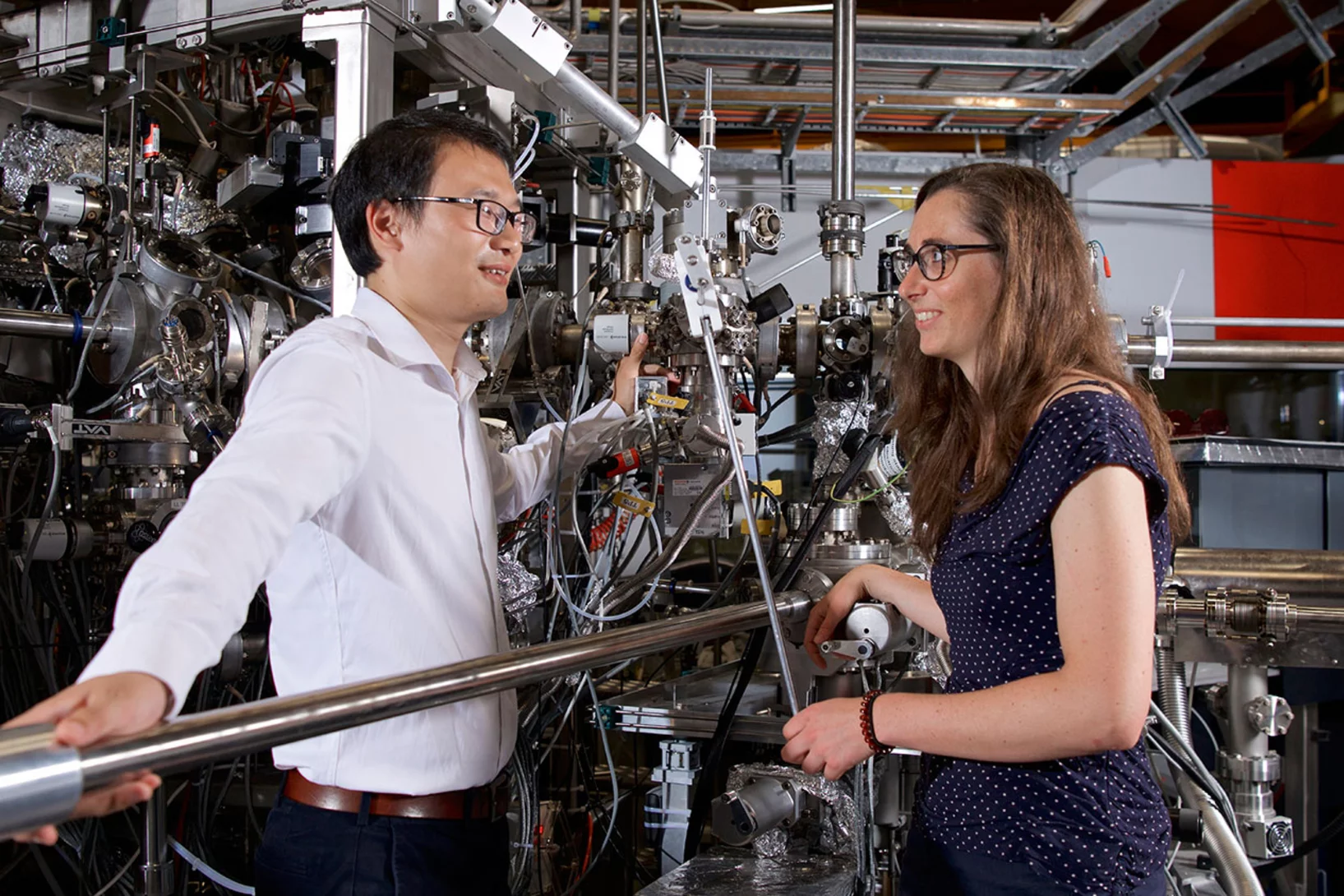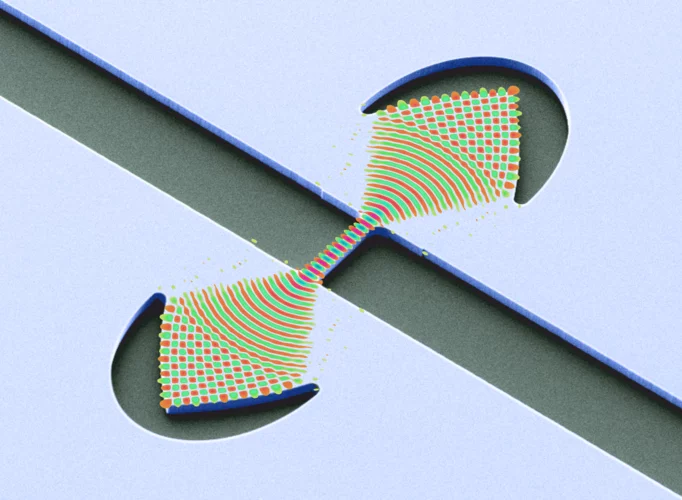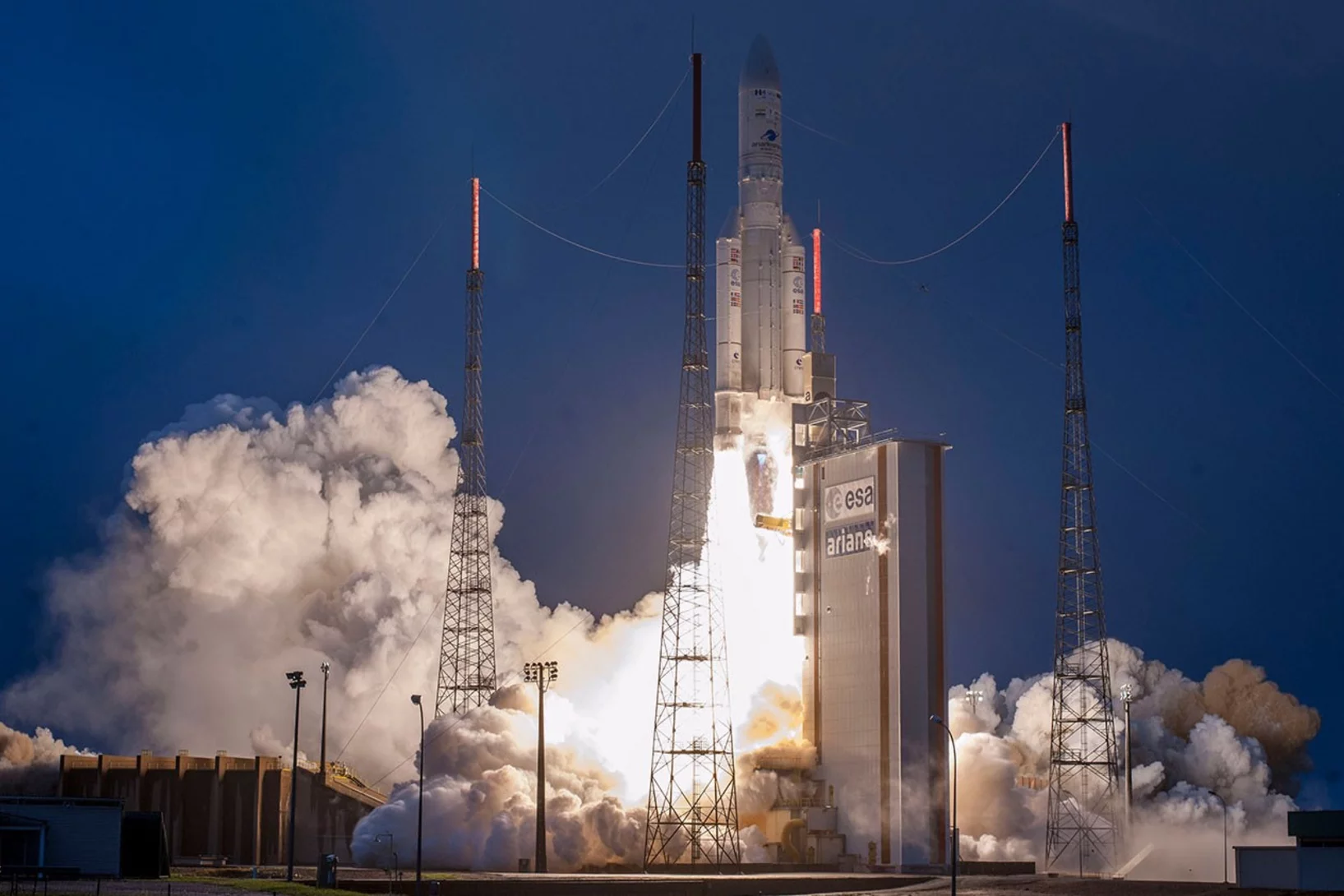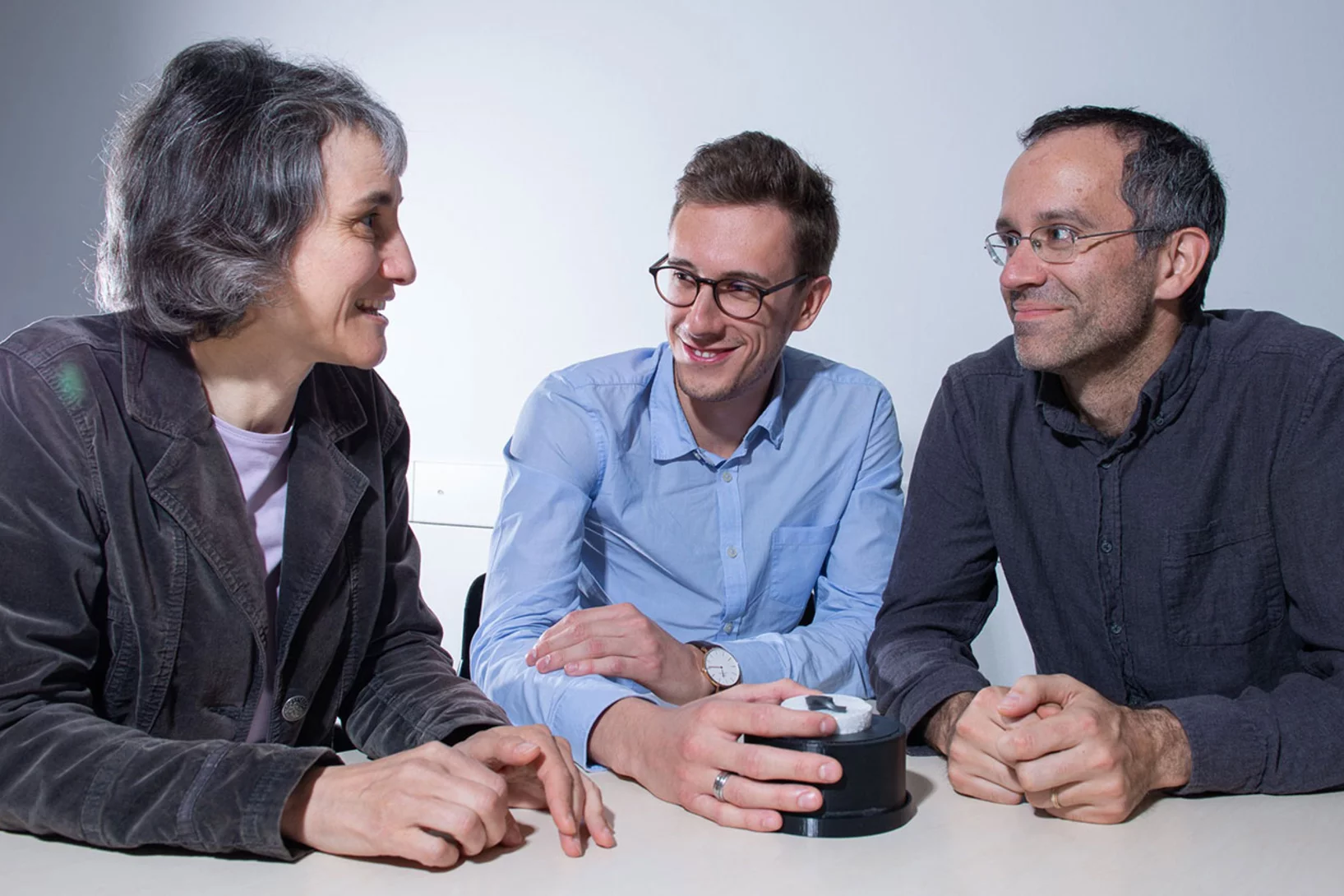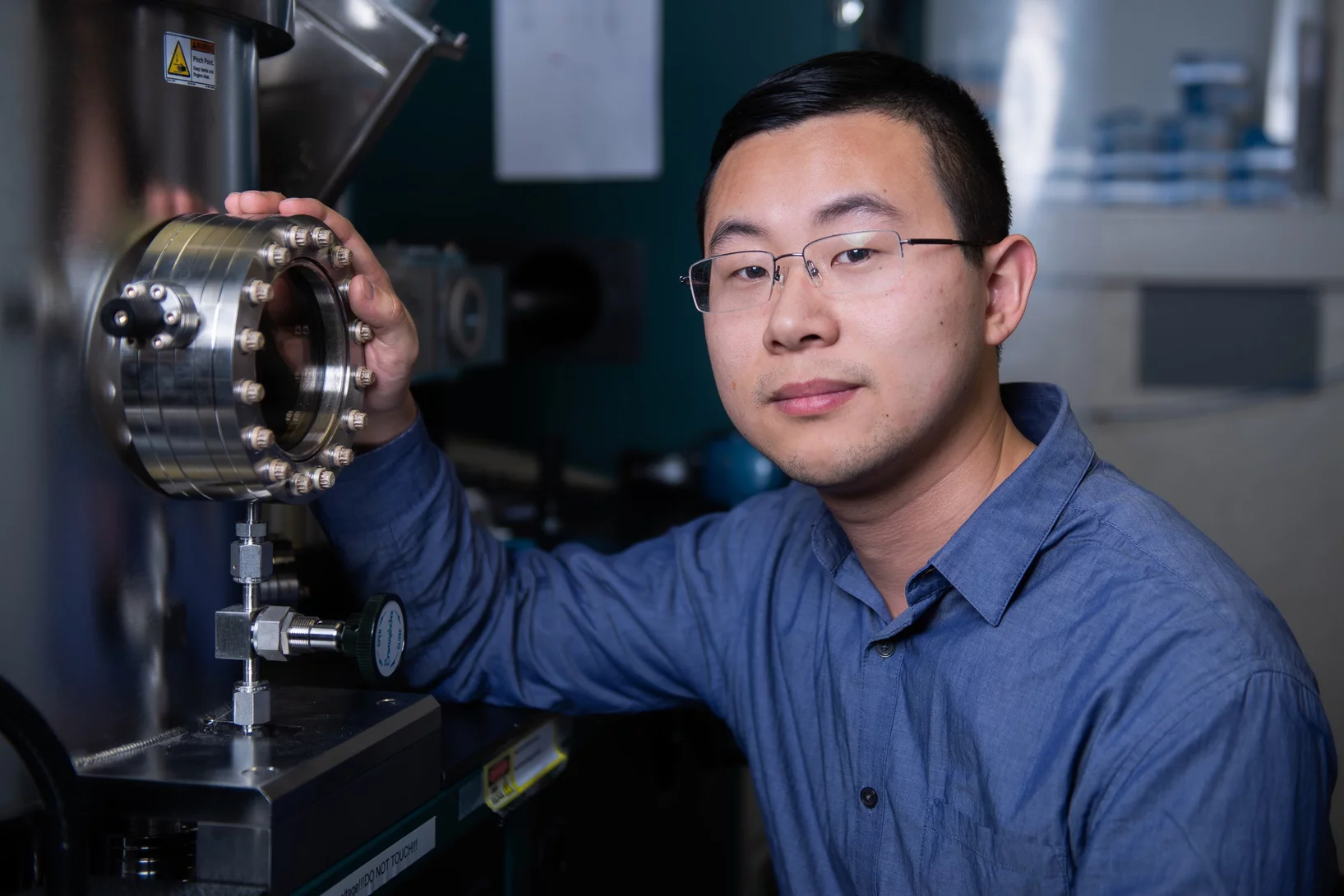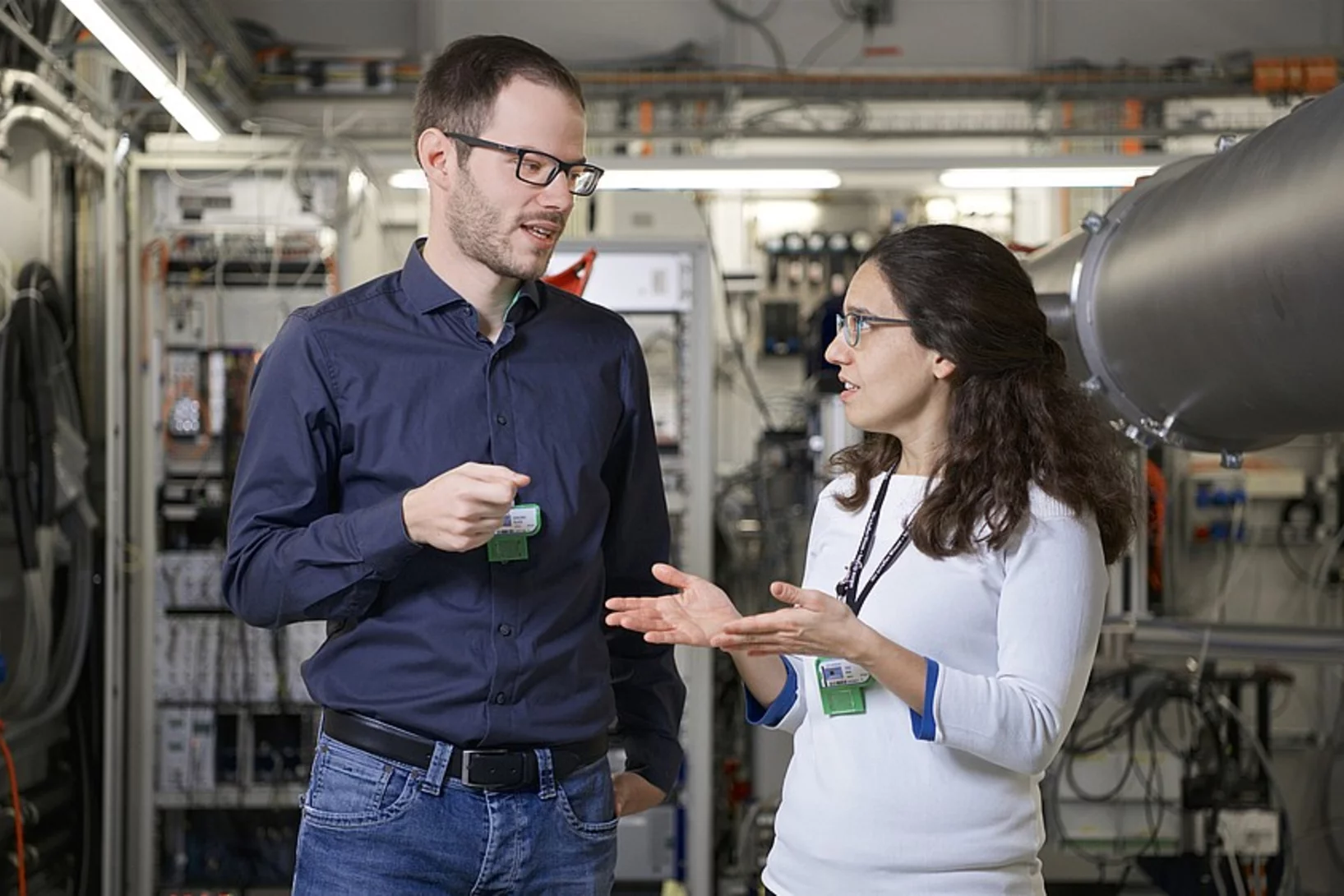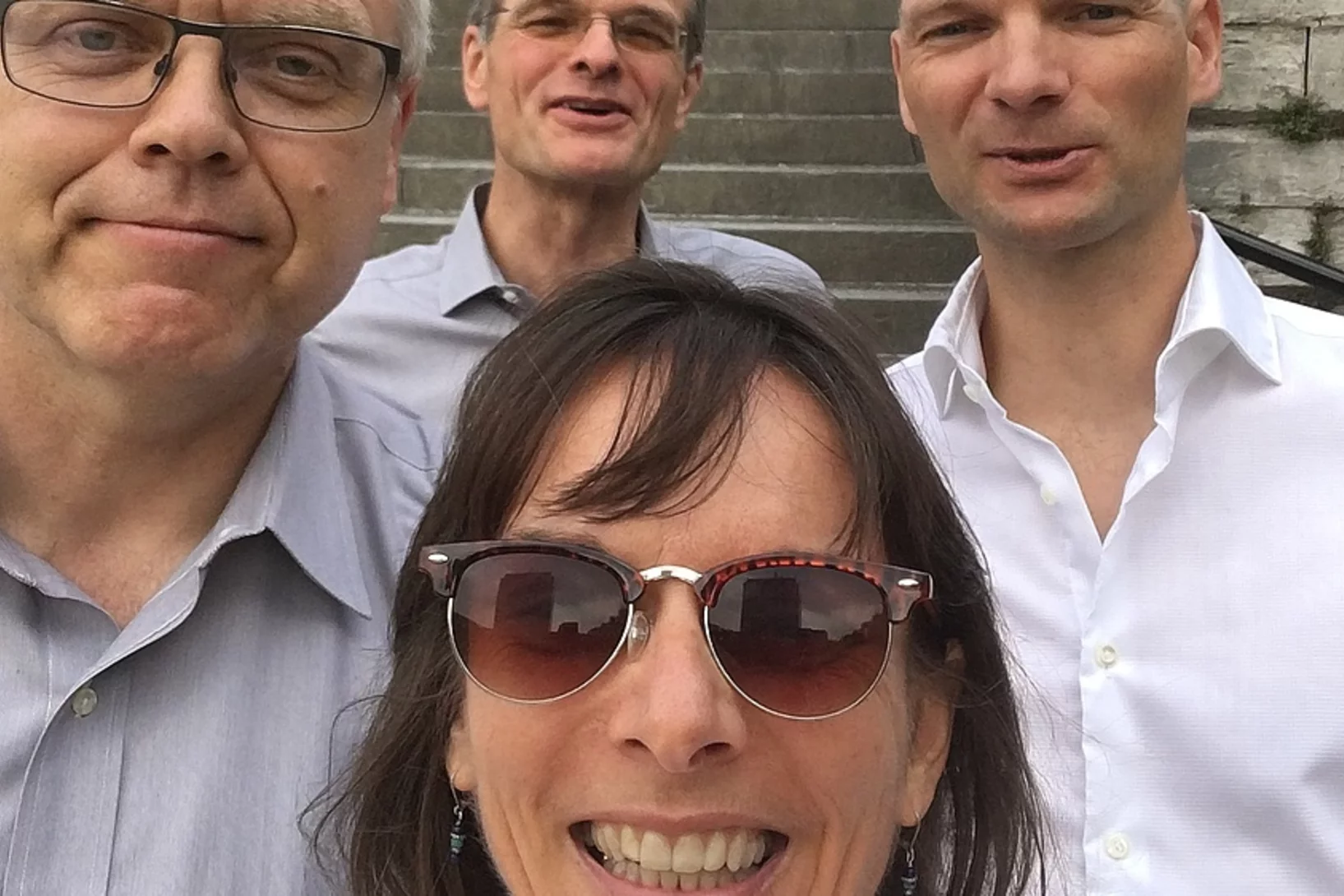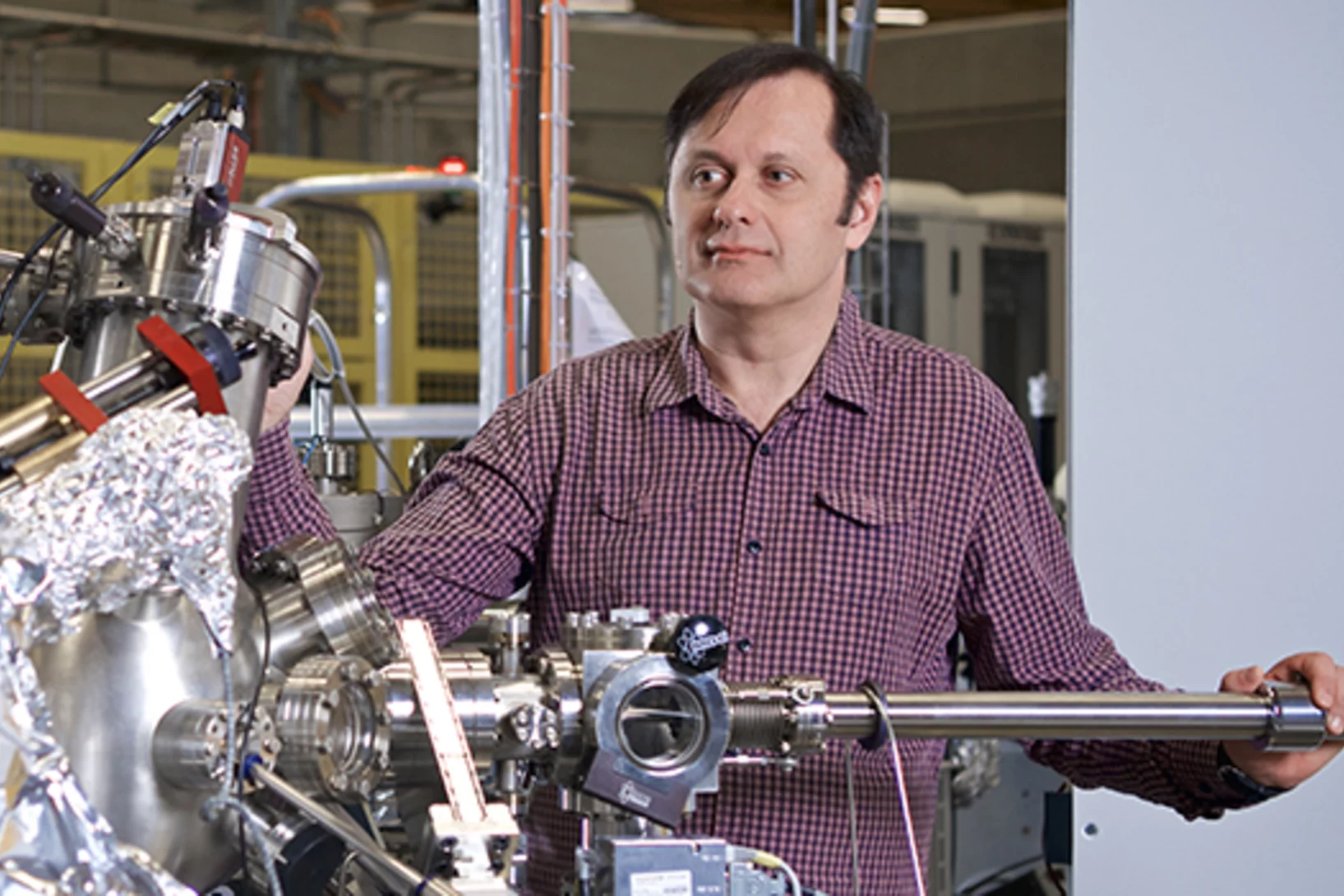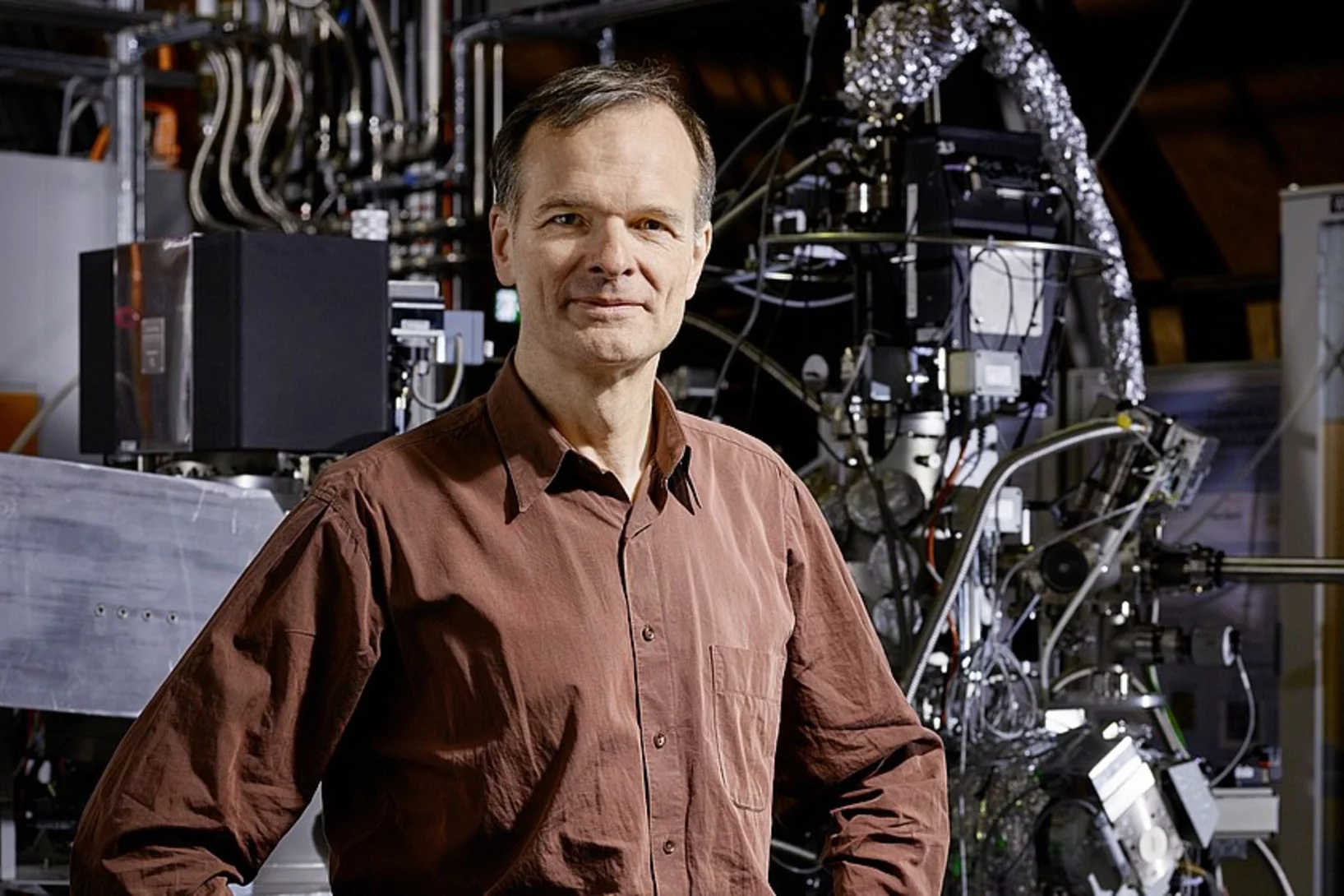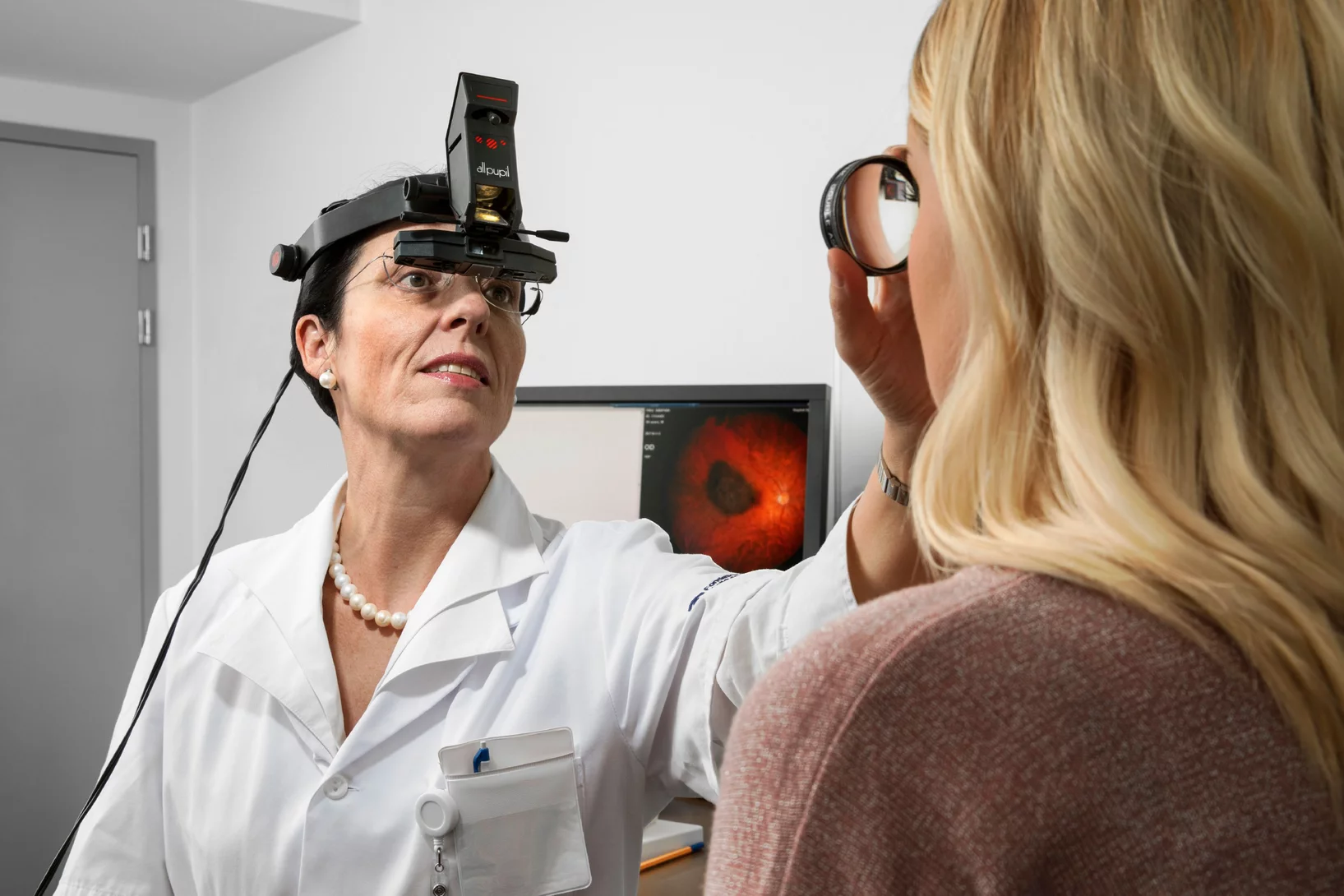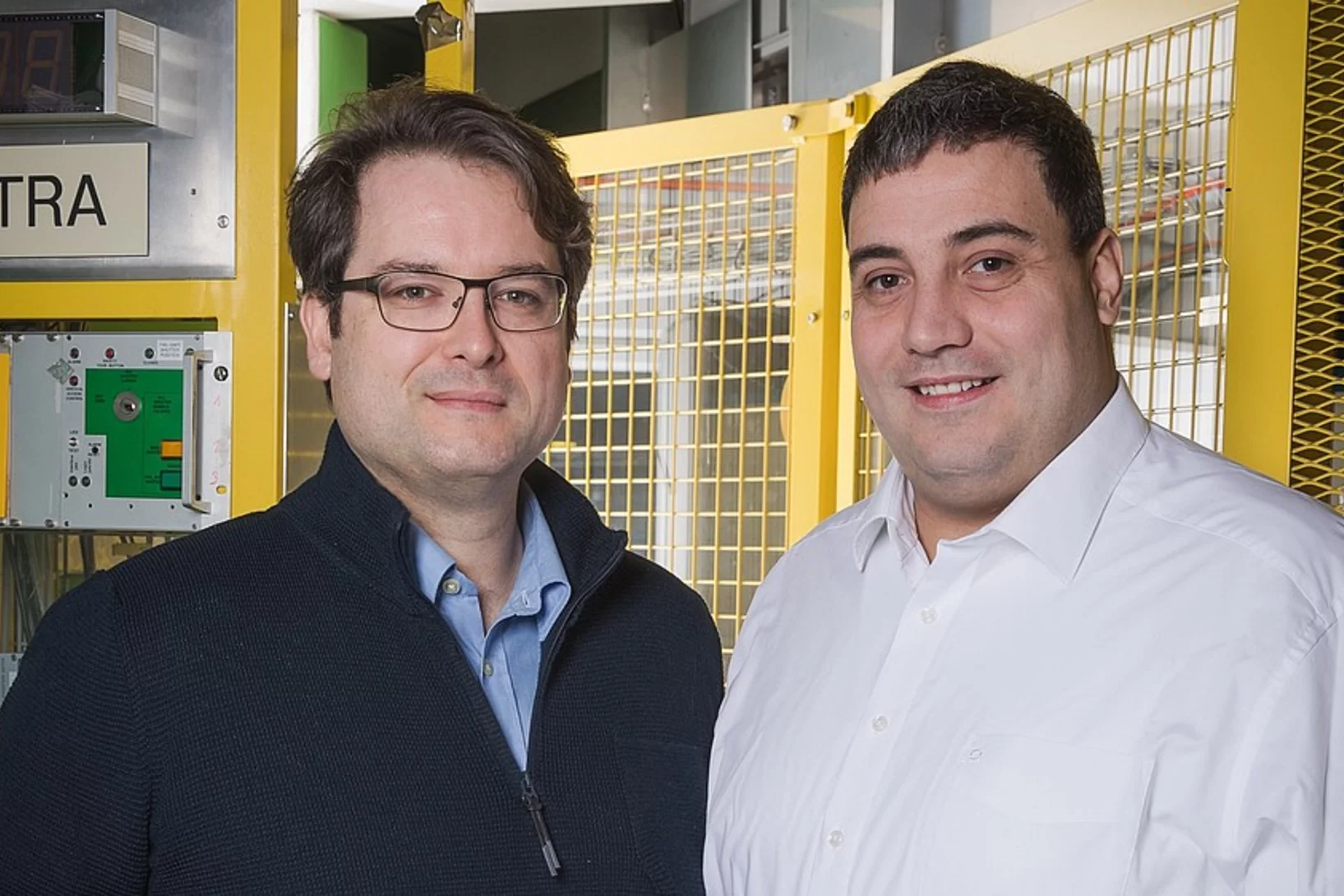The manifold characteristics of materials are determined by what type of atoms they are made of, how these atoms are arranged, and how they move. In the research area Future Technologies, scientists at the Paul Scherrer Institute are trying to clarify this link between the internal structure and the observable properties of different materials. They want to use this knowledge as fundamental principles for new applications – whether in medicine, information technology or energy generation and storage – or to explore innovative manufacturing processes for industry.
Find out more at: Future Technologies
Customising an electronic material
PSI scientists have investigated a material that could be suitable for future data storage applications. They have manipulated the crystalline structure of their sample while measuring how this affects the material’s magnetic and electronic properties.
Better catalysts for a sustainable bioeconomy
Zeolites are already indispensable additives in the chemical industry – researchers from PSI and ETH Zurich suggest ways to make them still more efficient.
Scientists develop a new kind of qubit based on the concept of Schrödinger’s cat
Scientists in the Applied Physics department of Yale University – one of the leading authors, Alexander Grimm, has in the meantime relocated to PSI – have developed a new device that combines the Schrödinger’s cat concept of superposition (a physical system existing in two states at once) with the ability to fix some of the trickiest errors in a quantum computation.
In search of the lighting material of the future
At the Paul Scherrer Institute PSI, researchers have gained insights into a promising material for organic light-emitting diodes (OLEDs). This new understanding at the atomic level will help to develop new lighting materials that have higher light output and also are cost-efficient to manufacture.
Athos is making great strides
The new beamline at PSI's X-ray free-electron laser SwissFEL will soon be ready for action. In December, Athos delivered laser light for the first time − even sooner than expected, to the delight of the researchers responsible for its construction.
Nanoworlds in 3-D
Tomographic images from the interior of fossils, brain cells, or computer chips are yielding new insights into the finest of structures. These 3-D images are made possible by the X-ray beams of the Swiss Light Source SLS, together with detectors and sophisticated computer algorithms developed at PSI.
Short film of a magnetic nano-vortex
Using a newly developed imaging method, researchers were able to visualise the magnetic structure inside a material with nanoscale resolution. They succeeded in creating a short "film" consisting of seven movie frames that shows, for the first time in 3D, how tiny vortices of the magnetisation deep within a material change over time.
Swiss STIX X-ray telescope sets off for the sun
On 10 February, the ESA mission Solar Orbiter is scheduled to start. The Swiss X-ray telescope STIX will be launching too – with detectors developed at PSI.
Simulation: The third pillar of science
PSI researchers simulate and model large research facilities as well as experiments, for example, in the materials and biological sciences. Andreas Adelmann, head of PSI's Laboratory for Scientific Computing and Modelling, explains how they do it.
Modelling and simulation pay off
Researchers in PSI's Laboratory for Scientific Computing and Modelling solve the most complex problems through a combination of theory, modelling, and high-performance computing. With powerful computers, they simulate the smallest molecules or large research facilities.
A fast and precise look into fibre-reinforced composites
Researchers at the Paul Scherrer Institute PSI have developed a new process with which fibre-reinforced composite materials can be precisely X-rayed. This could help to develop better materials with novel properties.
On the way to intelligent microrobots
It is reminiscent of a paper bird made with the help of the Japanese folding art origami: a microrobot that uses the force of magnetic fields to move. In the future, such small machines could be used, for example, in medical operations.
Research and tinkering – SwissFEL in 2019
The newest large research facility at the Paul Scherrer Institute, SwissFEL, has been completed. In January 2019 it began regular operation. Henrik Lemke, head of the SwissFEL Bernina research group, gives an interim report.
Visualising strong magnetic fields with neutrons
For the first time, PSI researchers have used neutrons to visualise very strong magnetic fields that are up to one million times stronger than Earth's magnetic field. This now makes it possible to study magnets that are already installed in devices such as magnetic resonance tomography systems or alternators.
Weyl fermions discovered in another class of materials
A particular variety of particles, the so-called Weyl fermions, had previously only been detected in certain non-magnetic materials. But now researchers at PSI have experimentally proved their existence for the first time in a specific paramagnetic material.
First demonstration of a Germanium laser
Scientist at the Paul Scherrer Institut and ETH Zürich, with colleagues from CEA Grenoble, have demonstrated and characterized a technology that, for the first time, yields lasing from strained elemental Germanium. This achievement underlines PSI’s leading role in the development of Silicon-compatible laser light sources.
PSI imaging helps with rocket launches
PSI researchers are helping the European space program: Their neutron imaging serves to ensure the quality of critical components for rocket launches.
New material with magnetic shape memory
PSI researchers have developed a material whose shape memory is activated through magnetism. Application areas for this new kind of composite material include, for example, medicine, space flight, electronics, and robotics.
New material also reveals new quasiparticles
Researchers at PSI have investigated a novel crystalline material at the Swiss Light Source SLS that exhibits electronic properties never seen before. Among other things, they were able to detect a new type of quasiparticle: so-called Rarita-Schwinger fermions.
A compass pointing West
Researchers at PSI have discovered a new phenomenon of magnetism with the help of the Swiss Light Source SLS. Certain groups of atoms behave like a compass pointing West. This could make computers much more powerful.
Watching electrons and switching bits on
Electronics should get smaller, faster, and above all more energy-efficient. These themes are also present in several research groups at PSI. From incremental improvements to complete rethinking – who is currently working on what?
Virtual lens improves X-ray microscopy
A method developed by PSI researchers makes X-ray images of materials even better. The researchers took a number of individual images while moving an optical lens. From these, with the help of computer algorithms, they generated one overall image.
Now it's time for something new
If you make electronic components smaller, they unfortunately get hotter. Also, we will soon reach the limit of technically feasible miniaturisation. At PSI, Gabriel Aeppli and Christian Rüegg are working on fundamentally new, physical solutions for better computers and data storage devices.
Measurement of five flashes from the depths of the universe
A PSI-developed detector called POLAR has collected data on so-called gamma-ray bursts from a space station. This is now helping to better understand these extremely high-energy flashes of light.
EU grants 14 million to Swiss Researchers
A team with three researchers from the ETH Domain has been awarded a prestigious EU grant. Today, they received the contract signed by the EU confirming the extraordinary 14 million euros funding. With it, they will investigate quantum effects which could become the backbone of future electronics.
Making the impossible possible
Use of multiferroic materials promises more energy-efficient computers because in these, an electric field would suffice to achieve magnetic data storage. Researchers at PSI have now made such a material suitable for computer operating temperatures.
On the path to new high-performance transistors
The electronics industry expects a novel high-performance transistor made of gallium nitride to offer considerable advantages over present-day high-frequency transistors. Yet many fundamental properties of the material remain unknown. Now, for the first time, researchers at the Paul Scherrer Institute PSI have observed electrons while they were flowing in this promising transistor. For that they used one of the world's best sources of soft X-rays at PSI's Swiss Light Source SLS.
Light for biomolecules and super-fast processes
The 16th of May is the International Day of Light. The research carried out with light at PSI enables advances in biology and pharmacology and also promotes the development of new materials for data storage and new technologies for personalised medicine.
Lausanne-Villigen return
Nowhere in the world have so many ocular tumours been irradiated with protons as at PSI. But before the affected patients go to Villigen, they have to visit Lausanne: for pretreatment at the Jules Gonin Ophthalmic Hospital. The more than 30-year-long collaboration between the hospital and PSI is unique, and in most cases it saves the patient's diseased eye.
Imaging at Paul Scherrer Intitute helps to increase production at ABB site in Aargau
The ABB facility in Wettingen got practical recommendations on increasing production of ceramic components. Researchers at the Paul Scherrer Institute PSI examined the components by means of neutron imaging. With the help of these images, ABB employees were able to see where there is still potential for process optimisation. This feasibility study was funded by the Hightech Zentrum Aargau.


